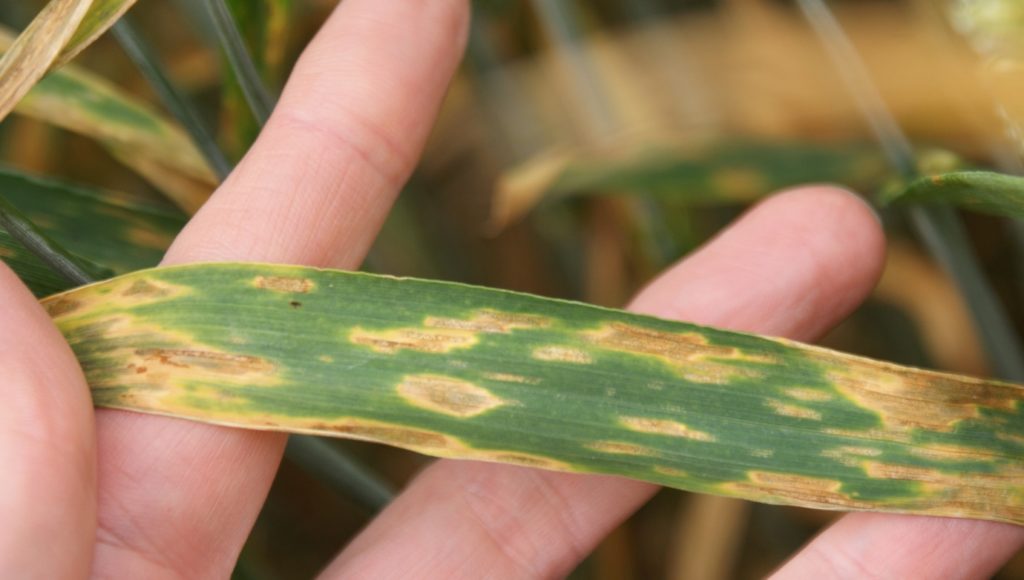Winter wheat – Septoria monitoring and control
24 April 2020For most crops, the T1 timing is still a week or more away. The real pattern for this year is that there is no pattern – crops are very variable depending on sow date, variety and site conditions, and disease levels and growth stages are variable. Many crops are sitting shorter than usual so the height of the internode might not be a good indicator of that actual leaf layer emerging. Ideally, peel back leaves and count in from the emerging leaf to check. Walking crops and keeping programmes tailored to the field in question is particularly key this year. There is some scope to reduce T1 inputs especially in late drilled, resistant varieties or clean situations, and the dry windy conditions have not suited Septoria. So, where Septoria is present it is still confined to lower leaves. Where T∅ sprays have been delayed by windy conditions and the T1 is now imminent the risk of dropping the T∅ is low unless rust is active.
There is less scope to reduce flag leaf inputs as it is the most responsive timing and SDHI and azole chemistry is core at this spray timing. One challenge this year is that most of our wheat flag leaf sprays will fall after the 20th May cut off for chlorothalonil use, which may unmask previously weaker SDHI and azole options which have been OK in previous years when propped up with chlorothalonil but may very marginal without it. The response to this is to move to some of the most effective options which include the SDHI loaded products.
Speak to your agronomist or agricultural consultant for more specific disease control guidance.
Sign up to the FAS newsletter
Receive updates on news, events and publications from Scotland’s Farm Advisory Service

